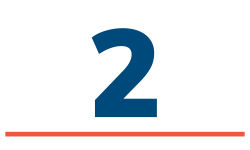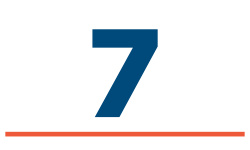Virtual exchange is a powerful way for young people to connect and learn, especially at a time when global education opportunities are harder to access. However, just as many schools, universities, and extracurricular programs are adapting during the pandemic, so are virtual exchange programs. Many virtual exchange programs are based in the classroom or group settings, while others rely on in-person engagement for efforts like participant recruitment. All virtual exchange programs serve youth and must accommodate the changing realities, lifestyles, and needs of their participants.
Adapting a virtual exchange program can be complex. It is important to share learnings and best practices as they develop, especially during such an unparalleled time. The Stevens Initiative looked to its grantees, a group of virtual exchange experts, for advice that can be shared with anyone adapting a virtual exchange program during the pandemic. This list of tips was written in collaboration with Global Nomads Group (Campfire), IREX (Global Solutions Sustainability Challenge), Soliya (Connect Global: US-MENA), William Davidson Institute at the University of Michigan (Business & Culture), World Learning (The Experiment Digital), and World Learning (NextGen Coders Network).

Modify Curriculum to Include Coronavirus Pandemic Topics
Global Nomads Group: For our Student to World program, we are developing two additional curricular options related to the global pandemic. The first focuses on individual roles in protecting everyone else, the virus and how it travels, and the interdependency of everyone, everywhere. The second explores how bias/bigotry and scapegoating arise in times of crisis. Additionally, we increased Seat at the Table offerings and developed a new version of the youth-led conversation guide – including discussion prompts related to the pandemic. These new prompts and additional opportunities to connect provide young people the opportunity to come together in this time of isolation, share their personal experiences, and hear what’s happening in other parts of the world directly from their global peers.
William Davidson Institute: We use an online discussion forum on Facebook called the “Cross-cultural Business Forum” where students across four countries (Egypt, Lebanon, Libya, US) share information about their cultures, ask questions, and respond to five formal course discussion questions. Responding to the crisis, we changed one of the discussion questions to instead focus on the possible disadvantages of globalization, as exemplified by the pandemic. We were pleased to see that the students took advantage of the forum to initiate their own discussions around the pandemic and its implications. In many instances, this generated a lot of interaction on the forum and helped build relationships across the countries through the shared experience of the unfolding crisis.

Be Flexible
Global Nomads Group: We developed an implementation iteration of Student to World that is marketed and provided directly to parents and the youth who live with them to offer virtual exchange as a solution to the current need for engaging educational experiences while youth are sheltering at home. We have put extra support in place for young people to participate in the program without a formal educator supporting their efforts. For our Collaborating Classrooms program, we have also redesigned our model for grouping global classrooms to ensure greater opportunities for exchange.
William Davidson Institute: As we shifted from four connecting classrooms to moving everyone online and connecting as individuals, we went from having four endpoints to 120 endpoints. When that happens, the level of complexity increases and so does the need for creativity and flexibility from a technology and pedagogy perspective. Experimenting with videoconferencing features such as breakout rooms become a great way to allow for similar levels of interactivity that students enjoy in a physical classroom. Also, utilizing frequent question and answer times, for example, in between student presentations, allows for a greater amount of interactivity, which is important when shifting to a fully online course. We have also found that, given the new level of dependence on the technology working well to have a smooth class experience, dedicating a person as the online moderator is very important so that the facilitators can focus on the students and the overall programming. Lastly, having quick and easy access to a technology support team is essential in case you run into any issues, and you will.

Consider New Strategies During this Inflection Point
Global Nomads Group: The current global crisis has caused all of us to think creatively, strategically, and quickly so that our programs can continue, evolve and adapt. Our creation of a direct-to-parent/youth Student to World iteration provided an opportunity for us to update the format of the Global Peer Stories library. This update is more appealing for the user and allows for back-end automation – setting us up for continual improvement that will reach beyond this time of crisis. Our ultimate goal is that this approach will increase student motivation as they engage in the program – especially in the out-of-school implementation environment.

Create a Sense of Community
Global Nomads Group: In response to social isolation, we have increased the number of Seat at the Table video conversation offerings for young people ages 16-19, inviting them to stay connected and keep this global, youth community strong. The program is creating a global community within a generation: the first true digital natives who easily transcend national borders due to the ubiquity of and their ease with communication technology (relative to prior generations).
IREX: In response to the pandemic, through calls and outreach to our students and facilitators, we learned there was a need to engage program participants as a larger community by creating a space for solidarity and encouragement. We created a short video highlighting tips for maintaining emotional health while social distancing. A Padlet was also shared with the entire community for participants to post uplifting comments, quotes, and photos during this time to encourage one another. It was important to give space within the program for all the adjustments participants were experiencing personally.

Provide Regular, Open, and Transparent Communication
William Davidson Institute: We found it is very important to send weekly guidance to students when moving a program fully online. This helps provide structure for the students in lieu of the traditional classroom structure they are used to. Guidance that we found useful to include is:
-
- The time the class will begin, and if dealing with multiple times zones, what the time will be in each locale.
- A reminder to students to join early for technology testing that day if they are presenting to test their audio, video, and content sharing.
- A reminder of the meeting link.
- Recommendations around best practices for the technology platform you are using. For us, we encouraged students to download the BlueJeans desktop application (our chosen videoconferencing platform) for a better connection, and to have a headset with a microphone.
- A reminder of Q&A time and naming protocols. For the naming protocol, we requested that they use a standard format “Institution Name – FirstName LastName”. This allowed the facilitators to more easily take attendance, and the moderators to quickly identify students during Q&A times.
World Learning, The Experiment Digital: With so much changing, it is important to keep participants informed about what is planned and what is unknown. While we are fortunate to have options for adapting and adjusting experiences from in-person to online, we must be transparent and recognize how these new virtual experiences may change. It is important to manage expectations by providing participants with a clear outline or syllabus of the timeline, objectives, and scheduled activities within a virtual program or course. This will help participants understand what to expect before, during, and after they engage online. These structured virtual spaces can teach youth how to connect, collaborate, problem solve, and replicate the experiences of in person interaction online. Learning how to adapt and adjust their mindset is a critical skill to help young people approach uncertainty. Recognizing change and uncertainty are not comfortable, having access to supportive virtual spaces allows youth to realize they are not alone, to empathize, and to connect on a deeper level from this shared experience.
World Learning, NextGen Coders Network: Prior to the pandemic, we established a notification system to connect with our participants when challenges arose and now use it to communicate with participants more frequently about how the pandemic is impacting participants. For example, when our participants in Indiana were forced to quickly leave campus and return home, we informed all MENA participants and allowed for an extension on the final project.

Be Proactive and Supportive of Partners and Facilitators
Soliya: We went into the semester fully aware of the responsibility that comes with connecting with young people in the midst of a global crises. Each country, university, or student were not in the same boat, though they were facing the same storm. We were proactive in communications, firstly to let them know that regardless of school closures, we are able to run our programs without jeopardizing the safety of its staff and team of facilitators. Secondly, we wanted to hear from them. We held a number of virtual town halls with facilitators and educators to learn about their challenges, which resulted in us making certain adjustments. Finally, we prepared a discussion guide aimed to inform and help facilitators while managing conversations about the pandemic.

Consider Equitable Access to Technology
Global Nomads Group: For Student to World, we created new PDF off-platform versions of curricular materials for those without reliable Internet. In tandem, we developed a new system for youth to share their stories via mobile device: youth use WhatsApp to submit their assignments to GNG staff, who upload them to the platform to become part of the Global Peer Stories library. We are still learning how to reach youth with limited connectivity during these times.
World Learning, The Experiment Digital: Access to online spaces and technology is not equitable across communities and this has been amplified by current closures of schools and public spaces, like libraries or internet cafes, where young people could previously get online. Virtual programming must consider how to support young people who do not have reliable access to the internet or the infrastructure needed to connect at home. One way we support technology access is by providing internet data plans for participants without reliable connections so they can participate from the comfort and safety of their home.

Make a Program Mobile Friendly
World Learning, The Experiment Digital: We have embraced mobile friendly and social platforms to help engage youth. Using platforms such as Slack, participants can complete activities through an app that many are already familiar with but is also easy to learn and use. Integrating apps and tools that are intuitive for users will ease the uncertainty of navigating new technology and limit barriers to access for those who may not have much experience in this area.

Review Privacy and Security Measures When Using Technology Platforms
Global Nomads Group: For our new home-based version of Student to World, we created a new pathway for youth to enroll in the program outside of school, with parent or guardian consent. In turn, we have updated and increased our privacy and security measures throughout the youth’s journey hosted on our online platform. We have also augmented the security for Seat at the Table conversations given increased volumes of young people joining, to ensure a safe and appropriate space.
Soliya: The growing demand on virtual connections has led to increased scrutiny of the technology platforms used to host thousands of students. Virtual exchange implementers should be asking questions about security and privacy to ensure that their participants, facilitators, and educators are protected.
This was written as part of the Stevens Initiative Response to the Coronavirus Pandemic, an effort to support educators, administrators, virtual exchange practitioners, families, and others impacted by the pandemic. Access a curated list of resources that can be helpful now and after the pandemic here.









